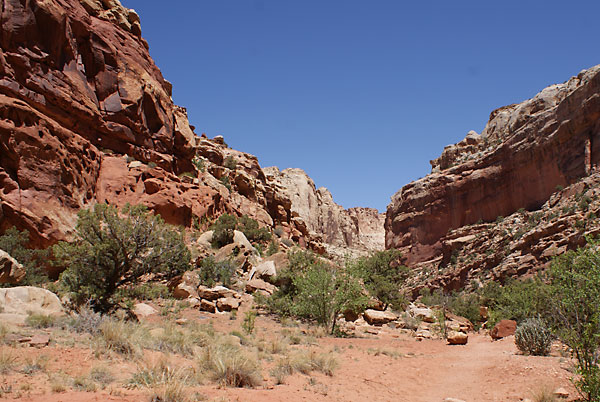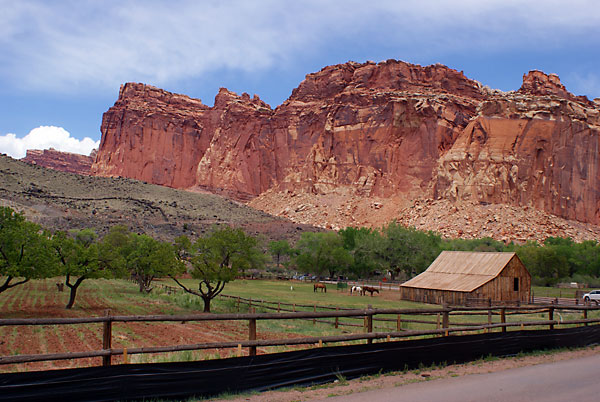
Capitol Reef is a hundred mile long buckle in the earth's crust that occurred some 65 million years ago; it formed massive sandstone cliffs stretching out along the buckle.

Besides the main line of cliffs, the area has many side canyons and washes. This is Grand Wash; the landscape reminded me of the cowboy movies I used to watch as a child; one could easily imagine a gang of outlaws riding out of the canyon. Legend has it that Butch Cassidy used this wash for his hideout at one time.

These pits in the sandstone are a common feature of the cliffs in this area. Sort of reminds me of swiss cheese.

We took a short hike in a hanging canyon near our campsite. After a late spring in Wisconsin, it was a pleasure to see some flowers. This bee was busy doing its pollinating.

The Fruita area of Capitol Reef was settled by Mormon pioneers in the late 19th century. They planted orchards; many of the fruit trees are still living and their fruit can be picked in season by national park visitors.

This one-room schoolhouse was used for educating the Mormon children from the late 19th century until it closed in 1941. At most, about 10 families lived in the Fruita area at any one time. We couldn't go inside the schoolhouse, but through the window we could see maybe 10 desks and a large pot-bellied wood stove in the middle of the classroom.

Of course, the Mormons were not the first people to live in this area. Fremont Culture indigenous people lived here about a thousand years ago. They left few traces, but the images they painted (pictographs) on, or pecked into (pectoglyphs) canyon walls can still be seen.
Next stop - Natural Bridges National Monument.